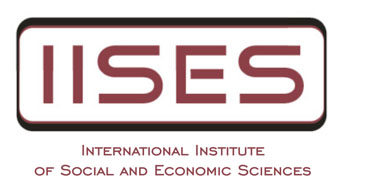35th International Academic Conference, Barcelona
DETERMINING THE REGIME STRUCTURE OF BIST-100 INDEX: MARKOV REGIME SWITCHING APPROACH
ENDER BAYKUT, VEYSEL KULA
Abstract:
The detecting regime structure of securities that is chosen by investors have started to gain importance day by day. In this research, regime structure of BIST-100 Index, which is one of the most intensively traded index of Borsa Istanbul, has been analyzed by Markov Regime Switching (MRS) Model. It will be determined the number of regimes of BIST-100 Index by using a daily closing value data set from 03.01.1997 to 31.07.2017 (4951 daily data). Firstly, return series of BIST-100 Index is calculated as percentage for analyzes then MRS model applied to this series in order to detect the number of regimes. Based on the findings, it has been determined three different regimes for BIST-100 Index. All of these regimes, which were defined as, low, normal and high regimes statistically significant at %5 significance level. Upon investigating the transition probabilities of MRS model, BIST-100 Index is generally observed to indicate a tendency towards a shift to normal regime. According to transition probabilities results, while the index is in the high regime, it prefers to stay in the high regime with a probability of 19.9%, wants to shift from high regime to normal regime with the probability of 64.96% and wants to shift from high regime to low regime with the probability of 15%. Providing that the index is within the normal regime, next period index will remain in the normal regime with %97.5 probability while ıt will shift from normal regime to low regime with %1.5 probability. In addition, it was detected that the possibility of index shift from normal regime to high regime is %1. When the regime is low, on the other hand, next period it will be the same as %24.31 probability while the regime will shift from low to high with %17.8 probability. The probability of shift from low regime to normal regime is %57.86. After determined the transition probabilities of indices, it was also calculated the expected durations of each regime separately. Findings have indicated that, duration of low regime is 1,32 days and high regime is 1.24 days whereas expected duration of normal regime is 41.22 days. Finally, BIST-100 Index is proposed as one of the indices that can be invested due to the normal regime structure for investors who do not prefer to take the risk and seek stability.
Keywords: Regime Switching, Markov Regime, MRS Model, Financial Econometrics, BIST-100 Index.

